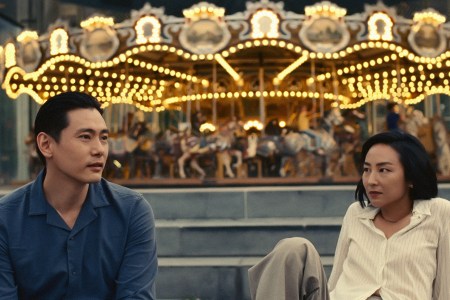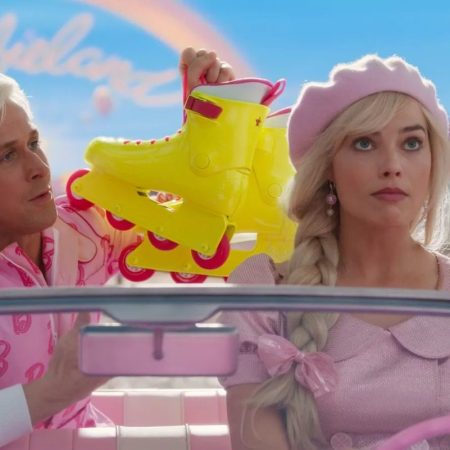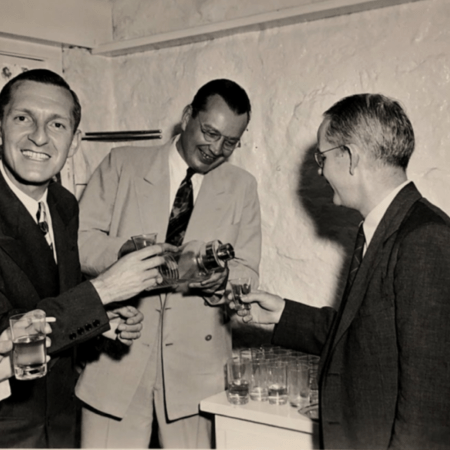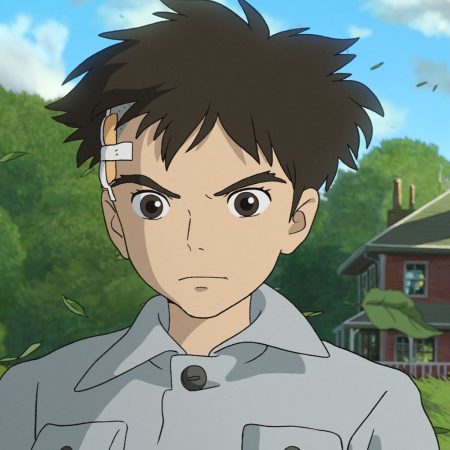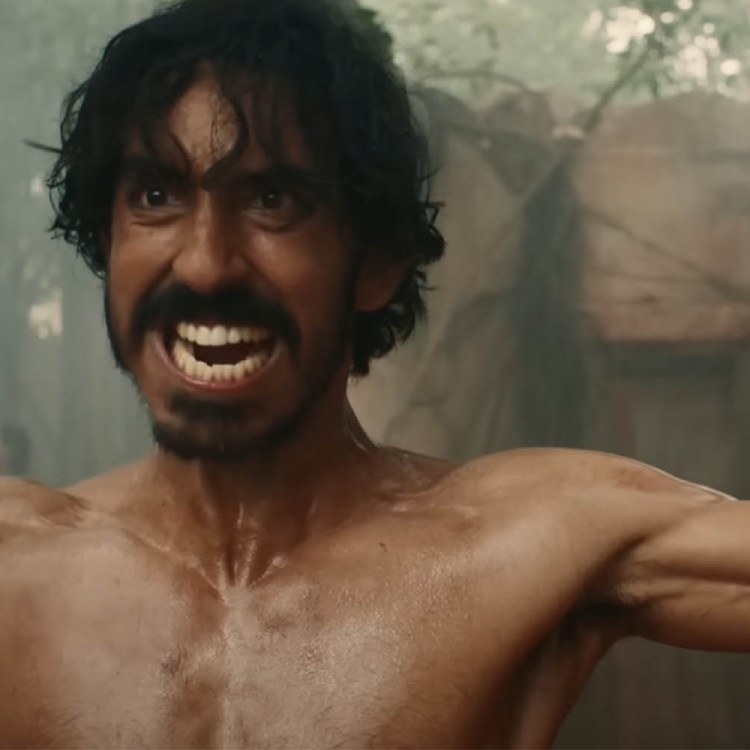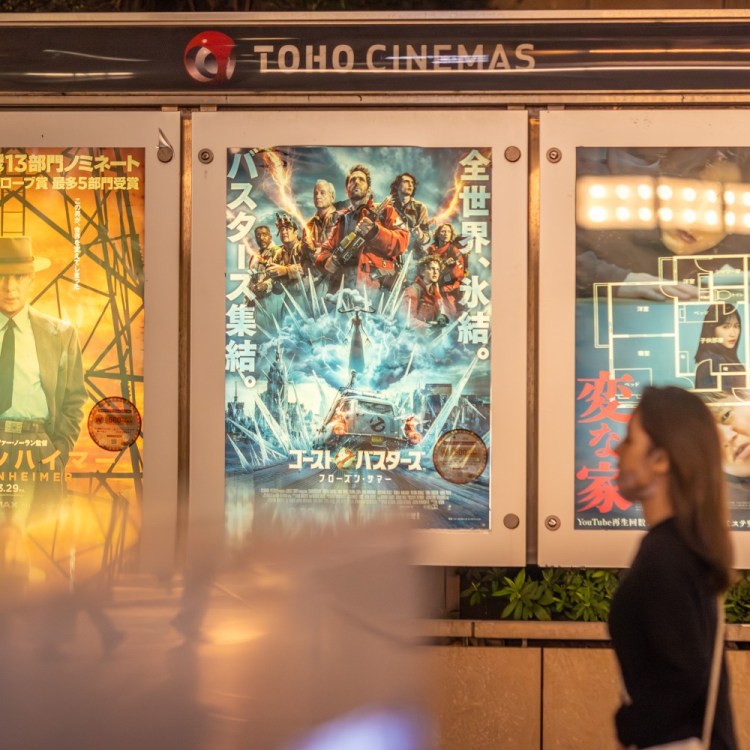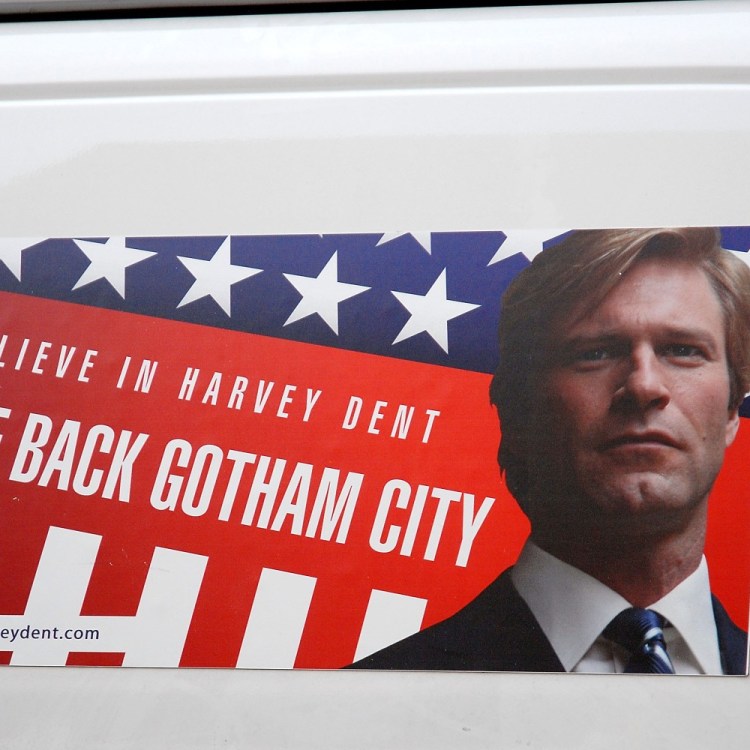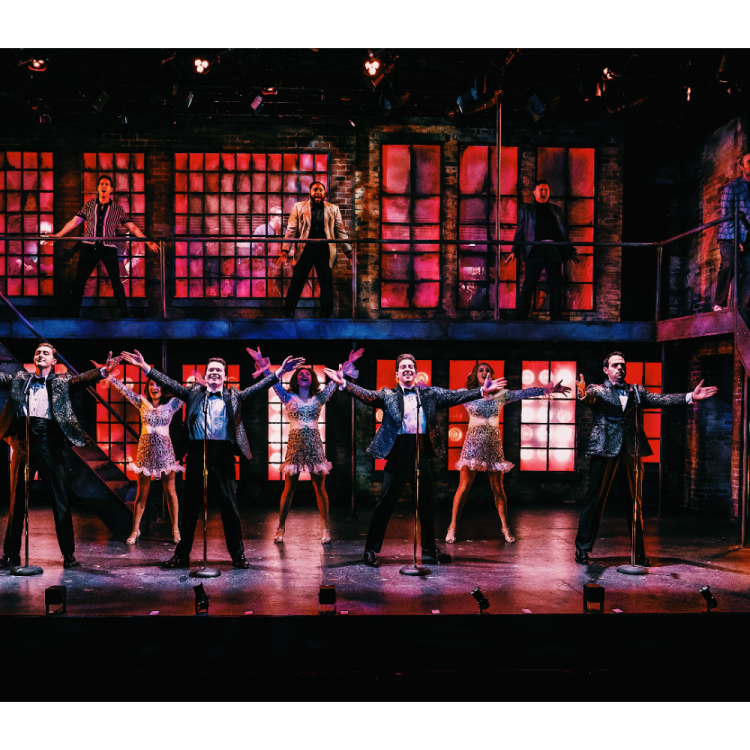When we look back at the past year in movies, it’s easy to dwell on the negative. For the first time in over 60 years, the industry had to cope with two simultaneous strikes — one by the performers of the Screen Actors Guild, and the other by the scribes in the Writers Guild of America — and as a result, many major releases were pushed back into 2024, either out of necessity or concern that with striking actors refusing to promote them via typical press appearances, no one would turn out to see them. Eventually, the studios reached an agreement with the writers and actors fighting for things like fair streaming compensation and the right to not have their likeness Weekend at Bernie’s-ed via AI after they’re dead, but not before throwing a massive wrench in this year’s planned release schedule.
Still, in spite of all that, it was a hugely significant year for the silver screen. This was, of course, the year that brought us the Barbenheimer juggernaut and, most importantly, reminded us all (including those all-powerful studio executives) that movies don’t have to be about Marvel superheroes or a reboot of an old franchise to draw crowds. A biopic — albeit a big-budget, Oscar-baity one — and a comedy made by a woman, for women (and for the men who maybe needed to hear that Pavement joke in Barbie in order to really take stock of their own lives) more than simply delivered; they carried the rest of the industry on their shoulders, sparing us from what could have been a real bummer of a year for movie fans.
Of course, there were plenty of other films that also helped us get through 2023, whether they were stunning documentaries, arty foreign films, big blockbusters or the latest A24 indie. Here at InsideHook, we don’t believe in ranking year-end lists; art is subjective, after all, and comparing the latest Wes Anderson movie with a film about a brutal assassin is nearly impossible, so trying to determine the single “best” movie of any given year feels a little silly. However, we’re more than happy to offer up a list of our personal favorites to hopefully point you towards a great movie you might have missed over the past 365 days. With that in mind, we asked our staffers — as well as some of our most trusted film critics — to name the movies that they enjoyed the most in 2023, in no particular order, below.
Oppenheimer
The Manhattan Project succeeded because they chose the right man for the job. Oppenheimer succeeded creatively because director Christopher Nolan did the same thing with Cillian Murphy (it also succeeded on an unexpected level financially because of the internet explosion following the creation of the word “Barbenheimer”). Besides that casting triumph, Nolan further proved his might as the preeminent blockbuster director of our time by coaxing wonderfully authentic, celebrity-negating performances out of the A-list cast (Emily Blunt, Florence Pugh, Matt Damon, Casey Affleck, Josh Hartnett in a fun surprise), and creating the most visually stunning movie of the year by relying on in-camera practical effects instead of the increasingly lackluster work of CGI artists across the Hollywood landscape. Any major production company can pay out the nose for a cast like this, but as we’ve seen, not everyone can bring them together in a way that honors storytelling over superstar spectacle. The only misstep, in my mind, was the casting of Robert Downey Jr., who, despite the praise he’s received from certain critics, wasn’t able to shed his own persona and sink into his character in a believable way like the others. — Alex Lauer
Asteroid City
Here is at once the lightest and the richest great movie of the year: A Wes Anderson comedy packed with multi-frame sight gags and jokes delivered in rapid-fire overlapping dialogue; also an open-air Wes Anderson meditation on what it means to create — not just art, even, but to create a sense of belonging in yourself, within a vast unknowable universe. At any given moment, Asteroid City has multiple plates spinning as part of a narrative following a live television broadcast of a play depicting the creation of another play, the latter of which we also see produced in widescreen cinematic color, in a real-yet-unreal desert far from the black-and-white sets of the movie’s framing device. I’ve seen the movie three times and I’m still not certain whether Conrad Earp, the author played by Edward Norton in the TV production, is meant as a genuinely biographical figure within the world that’s receiving the broadcast; Bryan Cranston, as the TV host, has such theatrical gravitas that his early announcement about how “Asteroid City is not real” sounds definitive and clarifies nothing. Not that it truly matters: The real miracle of the movie is how Augie (Jason Schwartzman), a widowed war photographer in the movie of the play within the play within the show, is just as emotionally involving as the actor (also Schwartzman), possibly playing the actor (also Schwartzman) playing Augie (also Schwartzman) (and so on) (and so on). We understand that it’s all fake and we don’t understand how fake; that’s the nature of the movies, knowing and not knowing all at once. It’s only logical that Asteroid City would venture into science fiction, with a group of “junior stargazers” and their guardians quarantined in the middle of the desert after an alien encounter; it’s a genre capable of examining that exact line between humanity and whatever, if anything, lies beyond. I do not believe Anderson specifically constructed this particular movie as a rebuke to the idea that his work is too meticulously overdesigned and aesthetically schematic to register as human, because I would like to think that Anderson is wholly unaware of any and all discourses swirling around his work. But rebuke that notion it does. At this point, we have to assume that making masterworks about how we reshape the world in a valiant, imperfect attempt to give it meaning just comes naturally to him. — Jesse Hassenger
Past Lives
In the year 2023, it feels comical to suggest that any release from cult studio A24 might miss the mark. But I don’t think it’s remotely outlandish to suggest that director Celine Song’s debut, Past Lives, is an exercise in expectations. The reflection pond of a feature traces the paths of estranged friends and potential soulmates Nora (Greta Lee) and Hae Sung (played by the dashing and remarkably talented Teo Yoo) as they intersect and separate over decades and continents. While the film embraces the seemingly never-ending Hollywood topics of connection, intimacy and destiny, it happily challenges the notions of what the average American viewer expects from the classic Oscar-bait drama-romance, instead relying on a deft exploration of both Korean and Korean-American experience to flesh out its (not-so) bittersweet depiction of predetermined serendipity. It’s beautifully shot and expertly paced, but it’s the chemistry between Lee and Yoo, along with some help from my choice for supporting actor of the year in John Magaro, that drives the emotion and intimacy in Past Lives. If you haven’t caught the triumph yet, prepare for a serious post-viewing mulling over. — Paolo Sandoval
“Past Lives” Is a Reminder of the Genius of Richard Linklater’s “Before” Trilogy
Linklater’s romantic trio of films are nearly impossible to replicate, but director Celine Song’s “Past Lives” is a valiant effortBarbie
Barbie deserved every bit of overwhelming bright-pink hype that it received every month leading up to its release date — and all of the months after. When I found out Greta Gerwig was leading this film, I knew its fate was in perfect, creative-genius hands, and that proved to be true. For decades, Barbie has been a childhood toy that has captured the hearts of so many people across all generations, and the film did just the same. My mom in her early sixties loved it, teenage girls loved it, and so did the teenage girls who are now in their mid-twenties and mid-thirties. And it’s because we all understand. Yes, the settings, costumes and overall cinematography were incredible, so vibrant and fun. But Barbie tugs at the heartstrings of everyone (me included) who spent hours playing with their favorite toy as a child. I wanted nothing more than to physically transport myself through the movie screen to live in Barbie Dreamland. Margot Robbie and Ryan Gosling were also perfectly cast — together, all of the Barbies and Kens had a chemistry that made for a hilarious, charming and moving performance. But the storyline itself captures the trials of girlhood, femininity and being a woman in society. Barbie became more than a doll — she became a symbol. She’s inclusivity. She’s ambition. She’s confidence. She’s a career woman. She’s a mom. She’s whatever the hell she wants to be, which isn’t something many are able people to do, especially without guilt. It made me laugh and it broke my heart. And it couldn’t have come at a better point in our time. — Joanna Sommer
De Humani Corporis Fabrica
“Your body is a wonderland,” sang desirous troubadour John Mayer, though he couldn’t have possibly appreciated the full scope of terrible beauty and appetite-dispelling gristle contained within our fragile sacks of meat. It would be years until Véréna Paravel and Lucien Castaing-Taylor (of the Harvard Sensory Ethnography Lab, the experimental documentary collective that turned fishing into a transportive odyssey for the senses in Leviathan) sent their specially-developed micro-cameras to probe the patients in a handful of French hospitals, revealing an entire hidden universe of viscous, craggy textures within. A critic is duty-bound to mention that approximately half of those intrepid enough to subject themselves to visceral close-up surgery footage still cry uncle somewhere around the most gruesome retinal incision since the days of Buñuel. Everyone else gets a boots-on-the-ground report on the eccentricities and struggles of the medical industry, couched in a haunting, gorgeous and occasionally gag-reflex-activating barrage of alien imagery that forces us to look at the world — and ourselves — through fresh, mercifully unpunctured eyes. It’s an instant avant-garde cult object that plays like an episode of ER directed by Stan Brakhage. — Charles Bramesco
When Evil Lurks
Somewhere between an exorcism film, a zombie flick, Invasion of the Body Snatchers and It Follows, Demian Rugna’s Argentinian horror epic turns what could have been a rote possession genre piece into something far more visceral and daring. Two brothers discover a neighbor who’s been turned into a “Rotten,” aka a possessed human awaiting to give birth to a demon. Problem? You can’t kill the Rottens with guns, and they’re very, very contagious. Certainly the year’s goriest film, When Evil Lurks offers real scares and could be the most unsettling film since Hereditary. — Kirk Miller
The Sweet East
“A novel is a mirror carried along a high road,” wrote Stendahl in The Red and the Black: “At one moment it reflects to your vision the azure skies, at another the mire of puddles at your feet. And the man who carries this mirror in his pack will be accused by you of being immoral! His mirror shews the mire, and you blame the mirror!” The Sweet East begins with Lillian (Talia Ryder) singing to herself in a groady bathroom mirror over the opening credits, and then busting out of a class trip to explore along the high roads of the Mid-Atlantic states, where she shews the mire of an America full of antifa crusties, trad-supremacist historians, indie filmmakers and beat-making religious militants. Director Sean Price Williams, a cinematographer influential for his from-the-hip work shooting real locations in 16mm, and screenwriter Nick Pinkerton, also a film critic who’s at his best when excavating the contexts of deeply particular art objects, evoke an entire history of disreputable American thought, with quotations from Poe, shots from D.W. Griffith, and jokes about Pizzagate. As played by the wonderful Ryder, Lillian has all the inscrutability of a normal teenage girl perceived, and ogled, by adults — is she punkish or guileless, vacuous or thoughtful, cunning or tentative? I’m probably overthinking it. She’s constantly being looked at, like a mirror, and like a mirror what she reflects back, blue skies or puddles, says more about who’s doing the looking. To quote the theme song to an even more vulgar work in the national vernacular: America, America, this is you. — Mark Asch
The Holdovers
There are large chunks of The Holdovers that look cold — literally and figuratively — by design, whether it’s the snowy New England landscape or the way curmudgeonly history teacher Paul Hunham instinctively keeps everyone around him at an arm’s length. But from the very first pops and hisses of a vinyl record player that open the 1970-set film, it feels warm. The Holdovers reunites director Alexander Payne with Paul Giamatti (who is absolutely deserving of his recent Golden Globe nomination as Hunham), and it follows a lonely trio as they bond over being stuck at the fictional Barton Academy over Christmas break. Da’Vine Joy Randolph is great as Mary, a cafeteria worker at the school whose son has recently died in Vietnam, but the real breakout performance here belongs to Dominic Sessa, who landed the role of the angsty prep-school kid Angus Tully after Payne’s casting director showed up at his real-life boarding school and plucked him from obscurity. (It sounds like a movie plot itself, doesn’t it?) Sessa’s a natural talent, and despite only appearing in high-school plays prior to being cast in The Holdovers, he holds his own against Giamatti. The general conceit is nothing new — we can create our own family, lonely Scrooge-like characters have their hearts melted around the holidays, etc. — but it’s the kind of lovely, touching character study that rarely gets made these days, and it’s a worthy addition to your Christmas streaming queue. — Bonnie Stiernberg
The Boy and the Heron
When Hayao Miyazaki, the director and co-founder of Japanese animation house Studio Ghibli, announced his third retirement in 2013, he called himself “foolish” if he were to return. A decade later, it’s come as no surprise to Ghibli fans that he’s since retracted his retirement for a fourth time with The Boy and the Heron, which has since earned Miyazaki his first Golden Globe nomination. Despite rumblings that Miyazaki is already back in the studio, The Boy and the Heron is packed with a magnitude of finality. Visually stunning and overblown with whimsy, it is reminiscent of the director’s archetypal iconography but magnified, as if Miyazaki wanted to craft the most Ghibli-esque piece of work ever created. The story follows a young boy, stricken with grief, who is tricked by a heron into entering a fantastical universe in an attempt to save his stepmother. It is a true showcase of Miyazaki’s lauded life’s work, from its eccentric-teetering-on-weird world-building to its contemplative, grave tone. There’s real magic in this one, and it’s a remarkable culmination to Miyazaki’s mastery. (If only he were to actually retire, that is…) — Zoe de Leon
Teenage Mutant Ninja Turtles: Mutant Mayhem
If you are a person of a certain age and you don’t have a favorite Teenaged Mutant Ninja Turtle, it is akin to being a person of a slightly older age and not having a favorite Beatle: you’re either lacking in direction or taste. That said, the turtles in this reboot of the TMNT franchise would never say that as they are open-minded, inclusive and overwhelmingly accepting of the shortcomings of humans. This movie looks great, has a soundtrack even haters can’t hate and differs from previous TMNT films in that the turtles, in addition to coming across as both identifiable mutants and bad-ass ninjas, are clearly teenagers — vulnerable ones. There are some other subtle twists on the classic TMNT format that separate this movie from its predecessors. As for which one’s our favorite? The only right answer is Raph. — Evan Bleier
You Hurt My Feelings
Romantic comedies have been experiencing a mega-drought. Oh, movie studios are still throwing their money and A-listers behind them (see: Anyone But You), but it’s been years since people looking for something to see on a date night have been gifted a classic that will be rewatched until the end of time, like When Harry Met Sally or 10 Things I Hate About You. Writer, director and producer Nicole Holofcener provided hope for the genre with You Hurt My Feelings by focusing on what makes a rom-com work: not gigantic budgets, expensive actors or outlandish conceits, but the weaving together of a million tiny moments that tug at your heartstrings and leave you looking at the world in a new, rosier way. The story feels fresh because she approached it through a couple (played by the utterly relatable Julia Louis-Dreyfus and Tobias Menzies) who weren’t falling in love for the first time, but instead getting back to that place after a falling out. That’s not to say Holofcener doesn’t work in the classic rom-com tropes; Michaela Watkins and Arian Moayed, who play the secondary couple and act as sounding boards for the main characters, bring the same magic propellant to the story that Carrie Fisher and Bruno Kirby bring every year to When Harry Met Sally during my annual rewatch. — Alex Lauer
No One Will Save You
Brian Duffield created a masterpiece in 2020’s Spontaneous, a pitch-black coming-of-age story about teens who start randomly bursting into flames — the tone there was half Heathers, half Carrie. His follow-up was decidedly different: A UFO invasion tale with no dialogue. Which means the film rests almost entirely on the action and facial expressions of Kaitlyn Dever (Booksmart) — as a shunned, lonely young woman in a small town forced into a night of combating and evading some mysterious extraterrestrials with no help in sight, she shines. Halfway in, you’ll forget the film’s experimental nature and wonder exactly how Brynn is going to survive not only the night, but even the next few minutes. — Kirk Miller
The Killer
Netflix optimizes and synergizes the life out of our leisure time, so — intentionally or not — it’s a pitch-black joke to orient one of their high-profile productions around a coldly philosophizing optimizer assassin, first seen operating from the ghostly environs of former WeWork, later judiciously employing Amazon and PostMates alongside his more traditionally deadly weaponry, killing in the name of the daily grind (albeit a well-paying one). The unnamed killer, played with maximum efficiency by Michael Fassbender and directed with exactitude by David Fincher, goes on a country-hopping revenge mission after his botching of a job places a loved one — possibly his only loved one? — in harm’s way. He barely speaks a word to anyone else on screen, but he does offer plenty of contract-killer advice in the film’s narration track, which sounds like Fight Club sloganeering pared down and deadpanned nearly to death. Instead of sarcastically describing an IKEA obsession, our zero-serving friend talks about McDonald’s — in Paris, no less — like an automaton (“a good-enough place to grab 10 grams of protein for a Euro”) while casually slagging off his fellow humans (“good luck with the Wordle”). Miraculously, The Killer still thrills as an immaculately stylized, quasi-minimalist procedural, even as hints of satire start to bleed in at the neatly trimmed edges. There may be some auto-critique in Fincher’s work here, but he’s not out to savage this guy (or himself) so much as examine this material for the hairline cracks that inevitably form in our contempo-capitalist façades, no matter how immaculate. — Jesse Hassenger
Wes Anderson’s “Asteroid City” Considers the Future by Looking to the Past
The director’s ode to the Space Age sees him turning his focus to questions of ambiguous motivation and mysterious inspirationAre You There, God? It’s Me, Margaret.
A chill runs down the spine at the thought of how many bad versions of Judy Blume’s ageless bildungsroman could’ve so easily slunk out of Hollywood, but instead, let’s heed one of her plentiful pearls of frank wisdom and just be thankful for what we’ve got. Director Kelly Freamon Craig expertly threads a needle between the comedy of nostalgia and the drama of social acuteness with her adaptation, returning to a well-measured medium-kitsch ’70s (back when pubescent girls believed they could give themselves bigger boobs through pec exercises) grounded in economic realities that hang too heavy on young Margaret Simon to go over her head. Getting re-settled after a move to upper-middle-class New Jersey, she’s every bit as emotionally sophisticated as the grown-ups around her — best among them Rachel McAdams, bringing levity and pathos to the frustrated second-waver mom — as she accrues experience not just with boys and bras, but with the awareness of how many different types of people this world holds. Blume and K.F.C. understand that maturity comes less from learning who you are than learning that everyone else never really finishes the process of figuring it out for themselves. — Charles Bramesco
Afire
The German director Christian Petzold makes cerebral films with a cool-to-the-touch style and an approach that some have found overly intellectualized — his previous film, Undine, reconfigured Germanic myth against a thrilling backdrop of urban-planning discourse in modern-day Berlin — and in his latest, he mercilessly satirizes an artist who holds himself apart from the messiness of human passions. Leon (Thomas Schubert) settles into a cottage on Germany’s Baltic coast, a cozy spot save for the wildfires raging elsewhere in the region, where he hopes to find the space to finish his second novel, Club Sandwich. Leon declines all invitations to go to the beach — he has to work, so of course he has no time to live; it’s as if he fears that were it not for his singleminded dedication to his lofty craft, there would be nothing exceptional about him. (Or perhaps his vanity and insecurity is more visceral: When he does go to the beach, he never even takes his shirt off.) And Leon must be exceptional: He is attracted to his laid-back housemate (Paula Beer) but is thrown off-balance by the revelation of her own literary pursuits, having never bothered to ask her anything about her life. As a consequence of his incuriosity about the world outside of himself, Leon has nothing to actually write about: When you eventually hear a few pages of Club Sandwich read aloud, you’ll want to make the old This Is Spinal Tap joke: “Shit sandwich.” Such material is bound to appeal to the kind of arrogant introverted mole-people who spend their time in the dark forming imperious opinions about movies, but even if you’re not a film critic, you’ll warm to Afire for Petzold’s patient development of his settings, and for his dire warning about encroaching climate change, a slow-approaching disaster we might yet avert if we weren’t all in our way oblivious and self-absorbed. Leon isn’t the only character in the movie who can’t see the forest — or rather, the forest fire — for the trees. — Mark Asch
Dream Scenario
We all rightfully love when Nicolas Cage goes big; no other working actor is capable of flying so completely off the rails as he is — and that’s a compliment. But every now and then, he dials it back for a surprisingly subtle yet nuanced portrayal of some unremarkable loser who’s growing frustrated with his own mediocrity (see also: Adaptation). That’s the Cage we get in Dream Scenario as Paul Matthews, a bald, timid college professor who quietly seethes over his former colleagues’ successes until one day he figures out that he’s been appearing in the dreams (and nightmares) of everyone on earth. He’s like Freddy Kreuger if Freddy Kreuger was a shy academic who just sort of eerily stands around and observes instead of killing you in your dreams. Naturally, he’s thrust into the spotlight, and the movie turns into a clever mediation on viral fame and the ways in which it can upend or destroy lives. — Bonnie Stiernberg
May December
I’m not necessarily a Todd Haynes guy — he’s obviously smart as hell, but with an academic remove to his most rigorous work that has left me unsatisfied in the past. With May December, Haynes, like a lot of great filmmakers, has transcended some of his own proclivities by leaning into them, hard. The metatextual melodrama, precisely grainy imagery and fraught psychosexual relationships are all there. Yet by turning up the movie’s potential for ickiness, dark comedy, tragedy all at once, Haynes and screenwriter Samy Burch construct a hall of mirrors around the fictionalization of Mary Kay Letourneau, the real-life woman who served time for statutory rape of a 12-year-old boy — and married him after she got out of prison. Here, Julianne Moore plays the Letourneau figure, a revelatory Charles Melton plays her now-adult husband (and father of her three children) and Natalie Portman plays an actress shadowing Moore as she prepares to play her in a movie. That last detail makes May December extra-aware of its tabloid-y tawdriness, which pulls us through the story until we’re surrounded by human wreckage (and yet never too far from an uneasy laugh). Portman and Melton embody the movie’s troubling contradictions: Portman is a former child star without that actress-y energy while maintaining a career-long facility with characters who feel compelled to perform, while Melton, fresh from perma-teen duty on TV’s Riverdale, essentially plays a child lost in the body of a man. Haynes hasn’t made a treatise on abuse, performance or manipulation; instead, his subjects tumble together through an American kaleidoscope — by turns beautiful, garish and complex. — Jesse Hassenger
Return to Seoul
With an elliptical timeline and stylistic spontaneity to keep his viewers on their toes, Davy Chou deconstructs a woman who likewise defaults to unsettling those around her whenever they start getting comfy. He deftly steers his lithe, entrancing character portrait between two clichés: the immigrant in search of personal identity through their estranged heritage, and the nomad learning to resist self-isolation and accept intimacy. But as Freddie, a flighty French-raised Korean expat in a state of permanent drift that’s blown her back to the peninsula, untrained first-timer Ji-min Park holds it all together by exposing the deep vein of discontent running beneath the sort of quirky, unknowable beauties long held as crush objects in the cinema. And even once she’s revealed her liberated pleasure-seeking attitude as a calculated defense mechanism, it’s impossible to tear your eyes away from her — not just the mesmerizing dance interludes, but the idle moments in which she holds the toll taken by years of missed opportunities on her face, every line chiseled with regret. — Charles Bramesco
A Thousand and One
Of time and the city: Over the course of A.V. Rockwell’s debut feature, single mother Inez (Teyana Taylor) raises her baby boy Terry from street-corner lost boy to magnet-school target against the backdrop of a gentrifying Harlem in the Giuliani-Bloomberg years. Taylor is sharp and brittle as press-on nails as a fiercely protective, combative, loving and occasionally spiteful mama bear. Periodic news breaks remind you of all the contexts that other films might use to explain and solve a problem like Inez and Terry — urban renewal, stop-and-frisk, education reform — but people do not see themselves as symptoms of sociopolitical narratives, and Taylor is so vivid, the film so immersed in her struggles, that the recent history of New York City becomes almost invisible, like oxygen. Rockwell and her cinematographer allow the look of the movie to evolve throughout the course of the dozen or so pivotal years in which the movie unfolds, switching camera lenses midway through as the saturated and grainy ’90s give way to the sanitized ’00s, and arriving, with the force of revelation, more or less in the present. — Mark Asch
This article was featured in the InsideHook newsletter. Sign up now.

